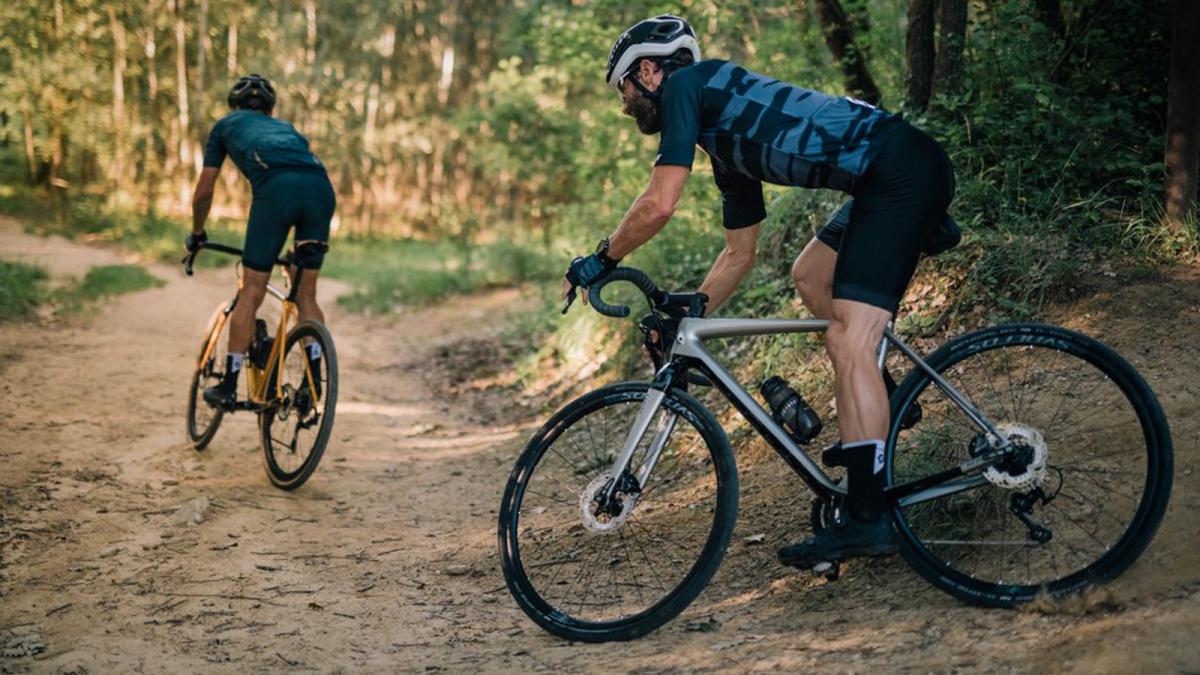In short: Gravel bikes are fast. In more detail, anyone can ride it at a sporty pace on most road surfaces. It gives almost the speed of a road bike on asphalt, but is capable of higher speeds on dozer roads and better quality dirt roads than a mountain bike or a cross/trekking bike. By the way, "gravel" itself means the classic gravel road. Gravel bikes are basically designed for sporty touring, and although they look similar to cyclocross models with bent handlebars, they differ from the special competition sports category in their geometry and other points as well.
Gravel vs Cyclocross:
The geometry and angles of cyclocross bikes are roughly the same as those of road racing machines, turning is important, including the steeper fork angle and the short head tube, so that you can sprint and accelerate more efficiently. Shorter chain forks don't leave much room for fenders and other equipment, drive efficiency and speed are the priority here as well. Classic cyclocross bikes are practically special sports equipment, which meet the needs of very few people, and are just as uncomfortable for the average hobby bike as road bikes designed for racing. The geometry of gravel bikes, on the other hand, is more similar to comfort road bikes, and the front tube is even flatter and longer. Rather, they use a longer top tube and a shorter stem. The chain forks are also longer, so a mudguard or even a luggage rack can be mounted on some gravel bikes.
Gravel bike for sporty hobby cyclists:
Gravel bikes are suitable for taking on the usual on-road posture, which is significantly more sporty compared to cross/trekking (and thus allowing us to move quickly). We can grip the steering wheel longer and lower, we can "tighten up" more when turning. The frame design makes it possible to use these machines specifically with balloon off-road tires. For example, with 40-50 mm tires, dirt roads and less technical forest paths can be easily overcome. There are gravel bikes that can be fitted with a 27.5" wheel set, with off-road tires the size of a mountain bike, and they even offer the first telescopic forks specifically for this category. They are also trying to ensure the comfort of the rear deck with alternative solutions. It is also important that on the frames of most gravel bikes, you can find eyes suitable for attaching touring equipment and mudguards, which means that these bikes can be customized in several ways, which go far beyond the traditional field of use on the road.
The development of gravel bikes coincides with the advent of "bikepacking", which means that on long, multi-day tours, they try to use every possible surface on the bike to mount packs in a way that does not compromise control. Gravel bikes therefore have many more mounting points than any other bike. For example, on the fork legs, the top of the top tube, the bottom of the down tube, etc. Since the design of the fixing points deteriorates the structural properties of the pipes, durable steel has become a popular frame material again. There is, for example, a much lower chance of threading into a hole made on a steel frame than, for example, on an aluminum frame. In addition, it is more comfortable in the field than the stiffer aluminum. Carbon is more the frame material of performance-oriented gravel bikes, since there are already gravel competitions, obviously the bikes used here are made of carbon fiber material.
The equipment of gravel bikes can be very different. Gearing can follow the classic road layout with a double chainring up front, but many gravel bikes are fitted with a single chainring up front. In the latter case, a wide-span chainring, for example 10-42/48, with a 40 or 42 chainring is also typical. While bicycles with rim brakes are still available for country roads, gravel bikes are uniformly equipped with disc brakes. Usually with a hydraulic model, but mechanical ones also appear in the lower price categories (or for world travelers). They have a special bent handlebar where the lower part is widened. In addition to the specific ergonomics, it is more practical to mount the bikepacking package on the handlebars. There are many types of rubber, from the diamond pattern, almost slick, to the more serious off-road pattern, approx. From 35 to 60 mm wide.
All in all, it can be said that if someone wants a serious and sporty hobby bike that can be used universally - for exercise, hiking, pleasure cycling, or even for transportation - a gravel bike can be an ideal choice.



